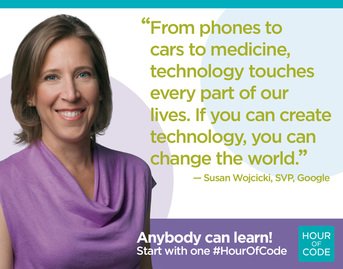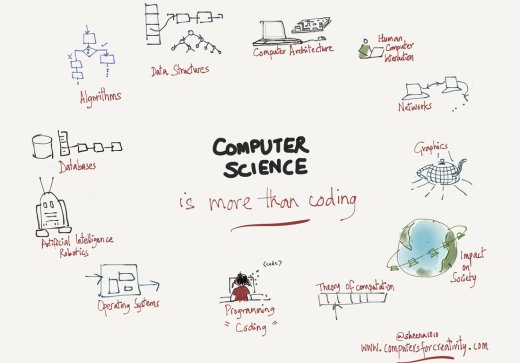Computer science is:
the study of computers and algorithms processes, their principles, their designs, their applications, and their impact on society learning how to use the power of computers to solve big problems.
Code.org the Computer Science Teachers Association (CSTA)
Comp Sci Link to this section
| Computer science is: | Computer science is not: |
|---|---|
|
---adapted from CS First |
Computer Science Education

Context and Evolution of Computer Science as a Discipline
An algorithm, in simple terms, can be understood as a list of well defined instructions for accomplishing a task. Within the context of computer science, algorithms take the form of computer programs, and are essentially the language with which we tell computers what we want them to do and how they should do it. Therefore, in lay language, one could say that there is a problem-solving process at the foundation of computer science. The complexity and analytic thinking involved in this process is valuable to know within as well as across an increasing number of professions.
A "users’ guide" for Stanford University computer science majors describes how computer science is a remarkably young field, yet a revolutionary one: It was just over fifty years ago that the first electronic computers were developed, and there was no recognition at the time of computer science as a field of study separate from electrical engineering or mathematics. Over time, as computers became increasingly powerful and were applied to more and more tasks, people began to realize that the task of programming those computers to solve problems was an extremely difficult problem requiring theories and practice unlike those used in existing fields. Computer science—the science of solving problems with the aid of a computer—became a new discipline in its own right.
A "users’ guide" for Stanford University computer science majors describes how computer science is a remarkably young field, yet a revolutionary one: It was just over fifty years ago that the first electronic computers were developed, and there was no recognition at the time of computer science as a field of study separate from electrical engineering or mathematics. Over time, as computers became increasingly powerful and were applied to more and more tasks, people began to realize that the task of programming those computers to solve problems was an extremely difficult problem requiring theories and practice unlike those used in existing fields. Computer science—the science of solving problems with the aid of a computer—became a new discipline in its own right.
---from Stuck in the Shallow End by Jane Margolis and her colleagues (2008)
Computer Science is Not Just Coding

---adapted from Boston University's Computer Science Department
This page was last updated on November 2, 2022

